As a long-time devotee of Doctor Who, venturing into the era of the Fifth Doctor, portrayed by Peter Davison, was an experience filled with both anticipation and a touch of trepidation. Following the iconic and lengthy tenure of Tom Baker as the Fourth Doctor, a regeneration always feels like stepping into uncharted territory. Having immersed myself in Baker’s bohemian charm for so long, complete with an ever-growing collection of scarves and a signature hat, the question loomed: what would this new Doctor bring? The Fifth Doctor’s era, spanning Seasons 19 to 21 from 1982 to 1984, marked a significant shift, and my journey through these episodes proved to be a captivating exploration of a beloved character’s evolution.
My initial hesitation soon morphed into a profound empathy for Peter Davison. If I felt a sense of transition after years with the Fourth Doctor, how must it have felt for Davison to step into the shoes of someone who had defined the role for seven incredible years? This realization sparked a surge of excitement. Here was an actor with the courage to redefine the Doctor, to carve his own path after such a monumental predecessor. I eagerly began my viewing journey on June 17, 2024, concluding on June 24, 2024, and emerged thoroughly impressed by the unique nuances of the Fifth Doctor.
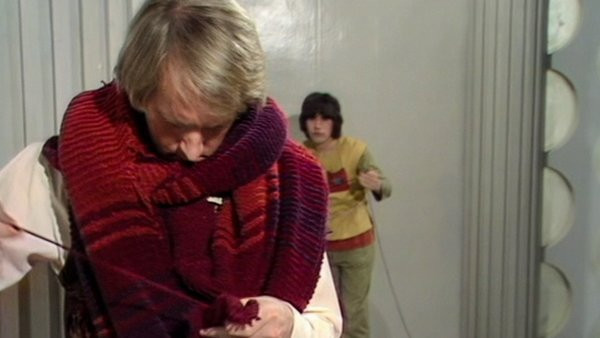 Fifth Doctor 9
Fifth Doctor 9
A Bold Departure: Establishing a New Doctor Who Identity
The opening episode of Peter Davison’s tenure, “Castrovalva: Part One,” immediately signals a decisive break from the Fourth Doctor’s era. The regeneration process is depicted as turbulent, leaving the Fifth Doctor in a vulnerable state. In a symbolic gesture, as he searches for the TARDIS’s Zero Room – a sanctuary for healing – he physically unravels the Fourth Doctor’s signature scarf, using it as a guide back to the console room. This act is laden with meaning. The scarf, a constant companion for the previous seven years, is discarded. Further emphasizing this transformation, he sheds his shoes, coat, and even tears his vest. The message is unmistakable: this is a Doctor reborn, ushering in a distinct era of Doctor Who.
Preppy Charm with a Time Lord Twist: The Fifth Doctor’s Costume
One of the immediate visual contrasts is the Fifth Doctor’s surprisingly “preppy” appearance. Moving away from the Fourth Doctor’s bohemian vagabond aesthetic – the wild curls, flowing scarf, and wide-brimmed hat – the Fifth Doctor debuts in sneakers, slacks, a pullover sweater over a button-down shirt, all under his coat. While undeniably preppy, it’s infused with a Doctor-esque eccentricity, most notably the stick of celery adorning his lapel. This sartorial choice further underscores the deliberate departure from the previous incarnation, a refreshing change that I found thoroughly engaging. Interestingly, the opening credits for Season 19 onwards list the character simply as “The Doctor,” not “Doctor Who,” a subtle yet notable first in classic Doctor Who.
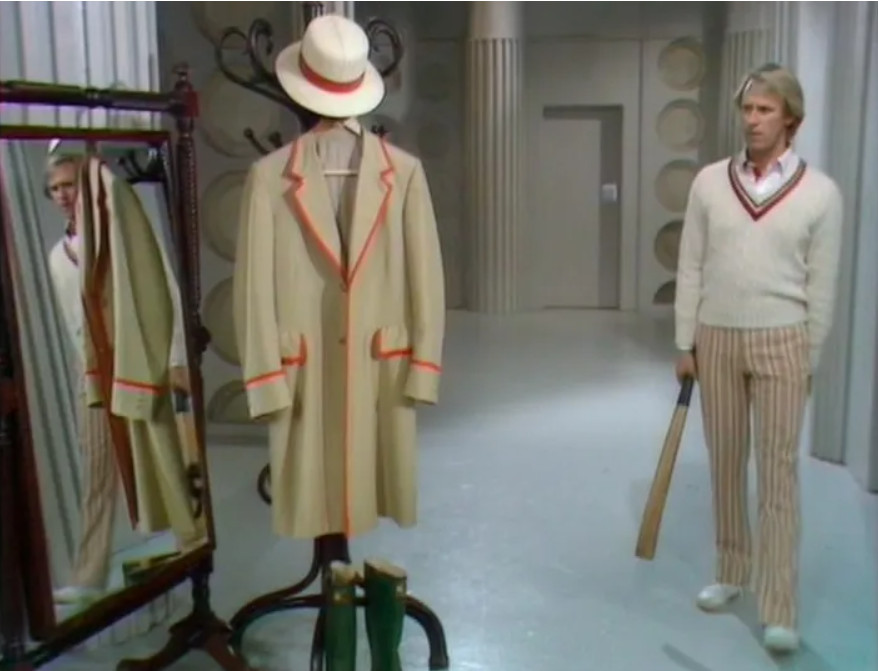 Fifth Doctor
Fifth Doctor
A TARDIS Family Dynamic: Companions and the Fifth Doctor’s Energy
The Fifth Doctor inherits the TARDIS crew of Adric (Matthew Waterhouse), Nyssa (Sarah Sutton), and Tegan Jovanka (Janet Fielding), companions who joined during the Fourth Doctor’s later adventures. Their dynamic with the new Doctor is instantly endearing. The best analogy I can draw is an ‘80s sitcom premise: the Fifth Doctor embodies the young, hip, single dad navigating parenthood on the go. This interpretation resonated deeply, adding a layer of warmth and relatability to the TARDIS team. Even the detail of Nyssa and Tegan sharing a room on the TARDIS reinforces this family unit concept.
Tegan embodies the sassy, eldest daughter, quick-witted and sarcastic, as she herself aptly describes as “just a mouth on legs.” Her exasperated exchanges with the Doctor highlight this dynamic, such as when searching for information in the Terileptil control room, met with Tegan’s dry wit. Nyssa, the “perfect” middle daughter, acts as the peacemaker, striving for harmony within their unconventional family. Her gentle interventions between the Doctor and Tegan showcase her maturity and desire for unity. Adric, the youngest brother, is the focus of the Doctor’s paternal attention, yet grapples with insecurity and a yearning to be seen as more mature. His poignant conversation with the Doctor about feeling overlooked reveals the vulnerabilities beneath his youthful exterior.
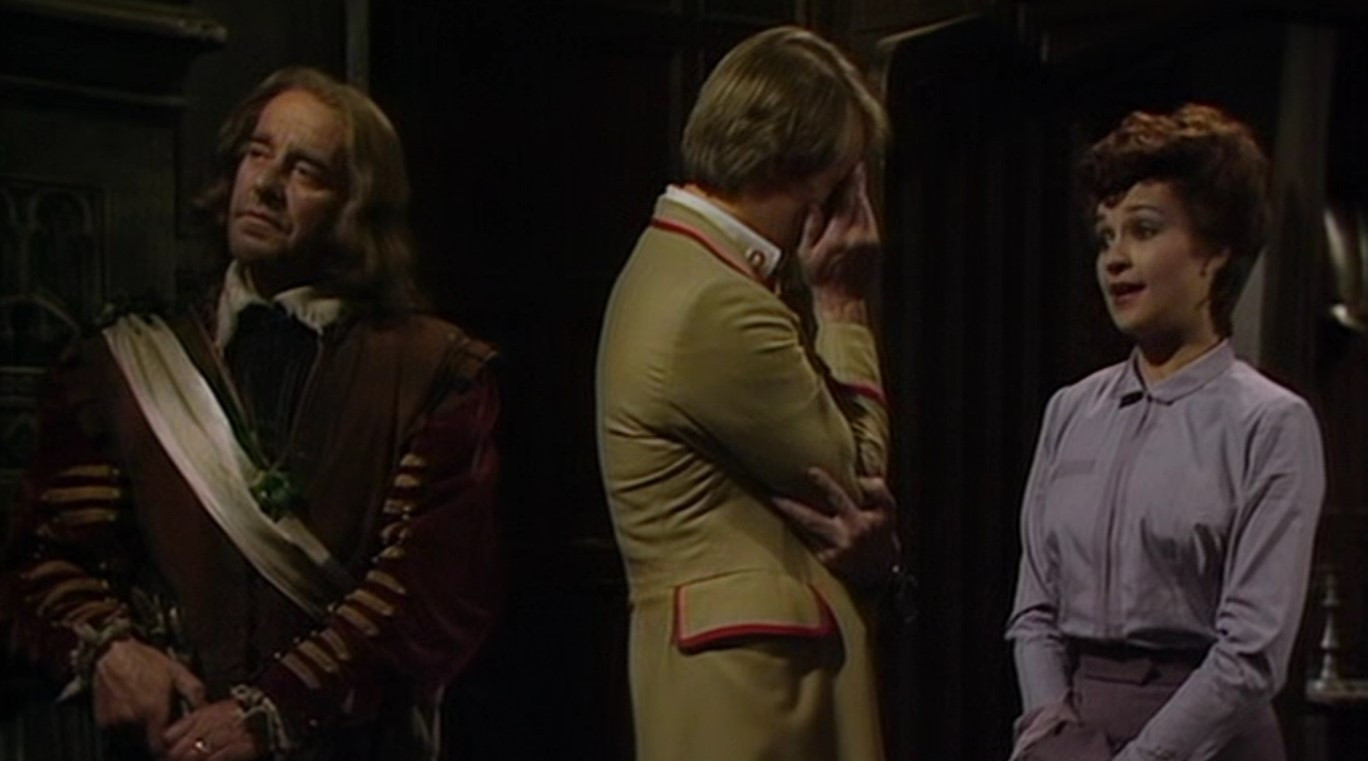 Fifth Doctor 11 (2)
Fifth Doctor 11 (2)
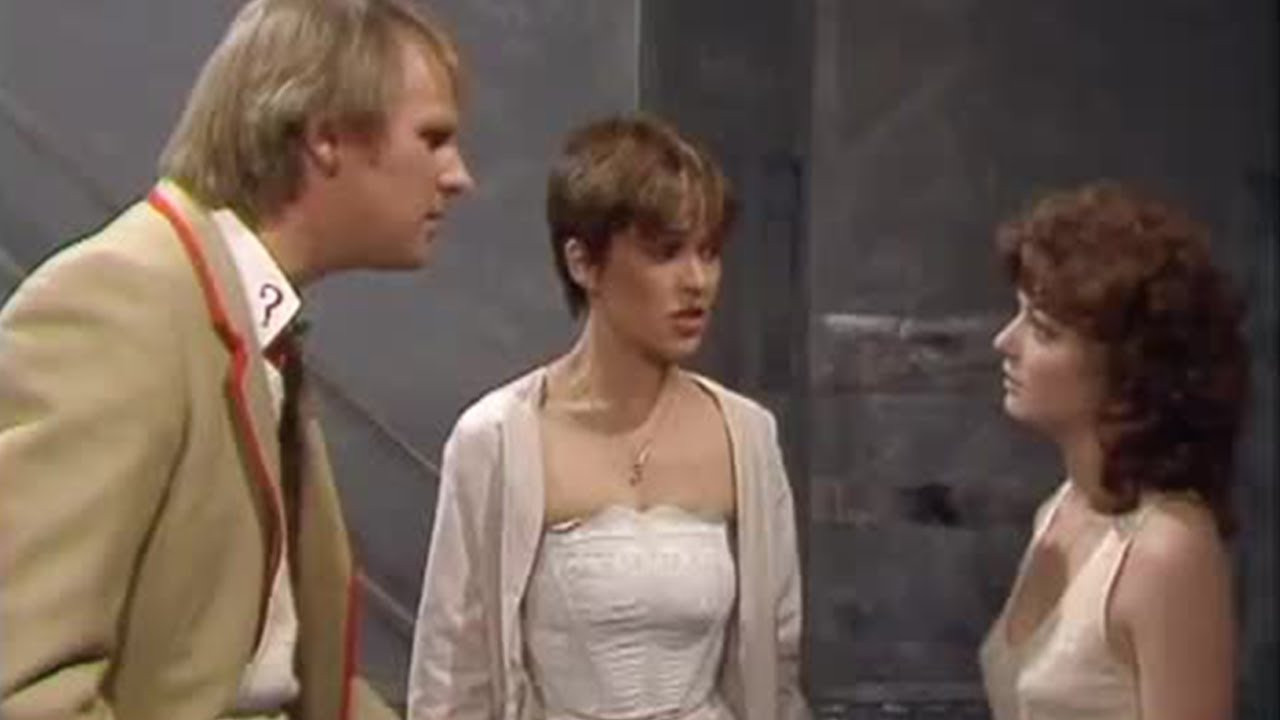 Fifth Doctor 12
Fifth Doctor 12
 Fifth Doctor 13
Fifth Doctor 13
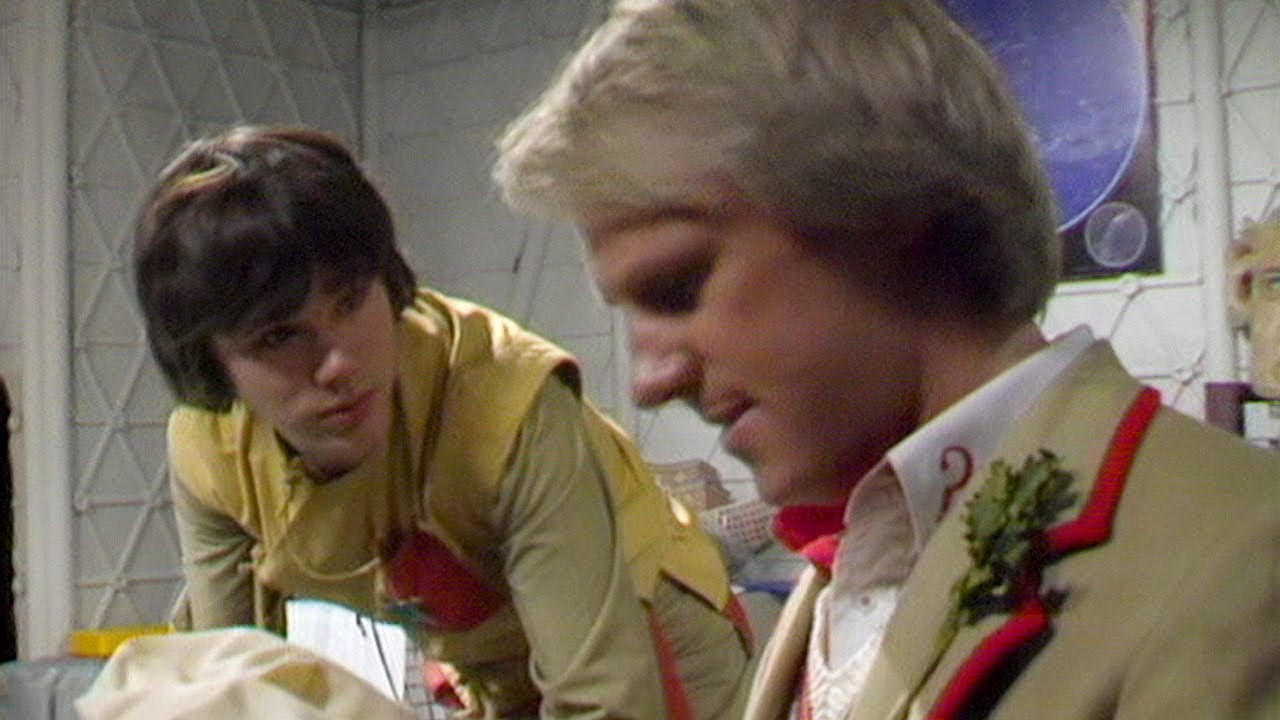 Fifth Doctor 14
Fifth Doctor 14
This family dynamic is further emphasized by small details, like the companions’ ages. In a trip to 1925, Tegan, being of drinking age, is offered alcohol, while the younger Nyssa and Adric are given orange juice, mirroring the Doctor’s own choice. This larger TARDIS team, reminiscent of a family unit, is a refreshing change from the more common Doctor-and-single-companion format, creating richer interpersonal narratives.
Paternal Undertones and Echoes of Doctors Past and Future
This paternal energy in the Doctor hadn’t been as pronounced since the First Doctor’s travels with his granddaughter Susan and later Vicki. While the Second Doctor had Victoria, a teenager, she departed in 1968. The Fifth Doctor’s paternal nature feels distinct. He displays a palpable love and care for his young companions, oscillating between gentle reprimands and proud praise, often exasperated yet fiercely protective as he guides them through the cosmos. This resonated deeply, adding emotional depth to his character.
Adding to his charm, the Fifth Doctor frequently displays surprised, shocked, or slightly overwhelmed expressions, further enhancing that endearing ‘80s sitcom dad vibe. This vulnerability and relatable human reaction in a Time Lord is part of what makes this incarnation so captivating.
 Fifth Doctor 4
Fifth Doctor 4
 Fifth Doctor 5
Fifth Doctor 5
Interestingly, echoes of the Fifth Doctor’s mannerisms seem to resonate in later incarnations, particularly David Tennant’s Tenth Doctor. The way he carries himself, the gesture of pushing back his coat to put hands in pockets, the use of glasses for reading or tech, and the rapid shifts from goofiness to serious protectiveness – these are all traits mirrored in the Tenth Doctor, suggesting Davison’s influence on the portrayal of subsequent Doctors.
Furthermore, the Fifth Doctor’s post-regeneration amnesia, struggling to recall his identity, parallels Jodie Whittaker’s Thirteenth Doctor, creating an interesting link across different eras of Doctor Who.
Memorable Foes and Recurring Themes
The Fifth Doctor encounters a range of adversaries, with the Terileptils standing out as visually striking and conceptually intriguing. In a series known for bizarre aliens, the Terileptils command attention. Their storyline delves into themes of colonization, imperialism, and environmental stewardship, recurring motifs throughout the Fifth Doctor’s era. These issues are brought to the forefront as the Doctor confronts the Terileptils’ plan to eradicate Earth’s population. During this encounter, the Doctor’s sonic screwdriver, a staple tool, is destroyed, marking a significant moment. This loss highlights the Doctor’s reliance on intellect and ingenuity over gadgets in classic Doctor Who, contrasting with the modern series’ frequent use of the sonic screwdriver.
 Fifth Doctor 7
Fifth Doctor 7
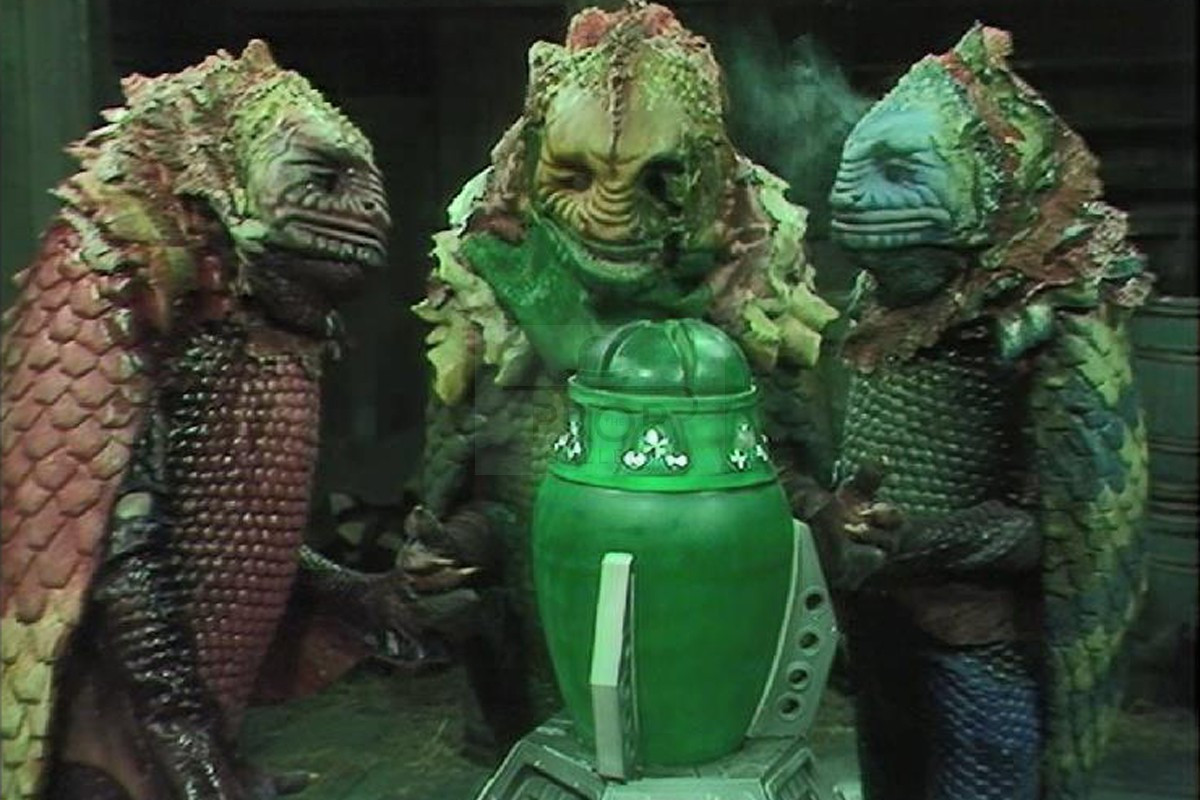 Fifth Doctor 8
Fifth Doctor 8
Nyssa’s increasing competence is another highlight of this era. Tasked by the Doctor to build a device to counter the Terileptils, she succeeds brilliantly. Throughout her travels, Nyssa evolves into a capable TARDIS pilot and problem-solver, often matching, or even surpassing, the Doctor’s intellect. This portrayal of Nyssa’s brilliance echoes companions like Zoe Heriot and Romana, showcasing the appeal of intellectually equal companions in Doctor Who. This contrasts with modern Doctor Who’s trend of predominantly human, contemporary Earth companions, often serving more as audience surrogates than intellectual equals. Classic Doctor Who, by including alien companions or humans from different times, facilitates richer narrative dynamics and intellectual interplay. Even Tegan and Adric gain competence in piloting and operating the TARDIS, demonstrating a shared responsibility within the TARDIS crew.
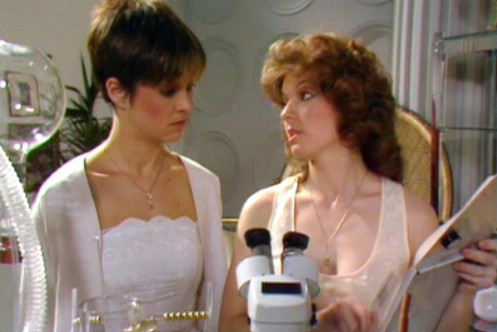 Fifth Doctor 26
Fifth Doctor 26
The Black Guardian Saga and the Introduction of Turlough
The Fifth Doctor’s era also features the return of the Black Guardian, seeking revenge. His method? Recruiting Turlough, a seemingly unlikeable schoolboy, to assassinate the Doctor. Initially, Turlough’s character is jarring and his storyline feels somewhat bizarre. However, Mark Strickson’s portrayal is compelling, and Turlough, despite his initial douchebag persona, eventually develops. His introduction coincides with the penultimate appearance of Brigadier Lethbridge-Stewart, a welcome return that evokes the nostalgic charm of the Third Doctor’s UNIT era, an era many fans, including myself, cherish for its grounded family dynamic.
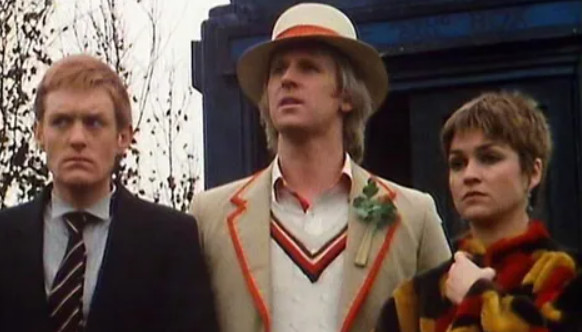 Fifth Doctor 6
Fifth Doctor 6
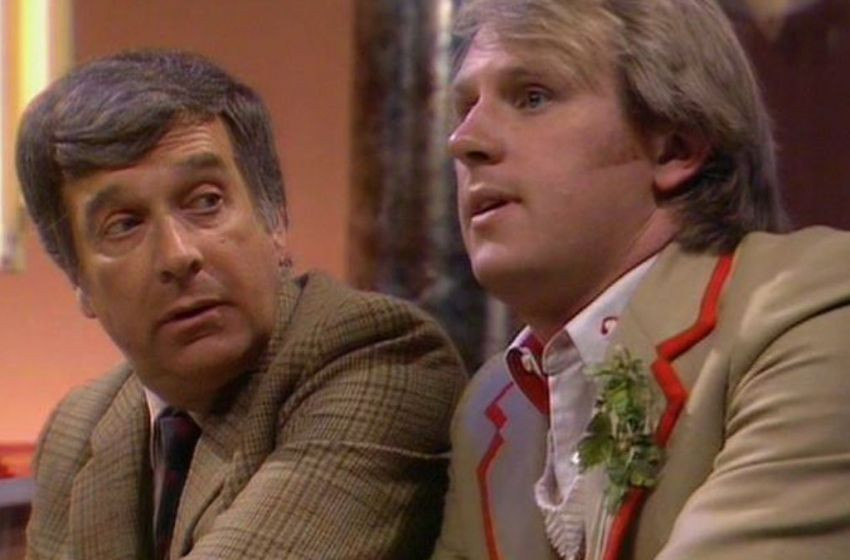 Fifth Doctor 25
Fifth Doctor 25
The Fifth Doctor’s era also includes the 20th Anniversary Special, “The Five Doctors,” featuring multiple Doctors, a celebratory highlight. The villains are diverse, but the Mara stands out, particularly for its exploration of Hindu and Buddhist symbolism. The Mara storyline, with its themes of delusion and despair, and the matriarchal Kinda society led by characters named “Wisdom” and “Compassion,” offers a rich layer of cultural and philosophical depth.
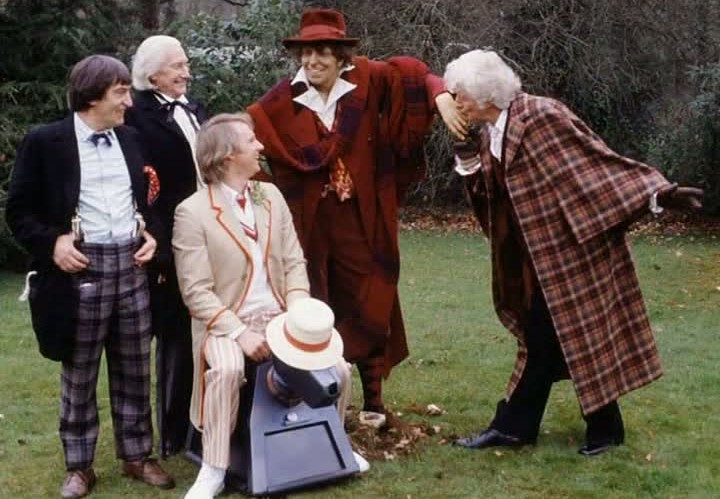 Fifth Doctor 17
Fifth Doctor 17
 Fifth Doctor 20
Fifth Doctor 20
Descent into Darkness: Tragedy and Moral Ambiguity
Despite the lighter, sitcom-esque tone of the initial seasons, the Fifth Doctor’s era takes a darker turn, unprecedented in classic Doctor Who, foreshadowing elements of modern Doctor Who. The death of Adric is a watershed moment. He becomes the first companion to die in classic series canon, sacrificing himself to prevent a Cyberman ship from crashing into Earth – an event that inadvertently causes the dinosaur extinction. This tragic event is handled with impactful silence during the end credits, a stark contrast to typical Doctor Who episodes, amplifying the emotional weight. This companion death, unthinkable at the time, mirrors the emotional impact of companion losses in modern Doctor Who, like Rose Tyler’s departure with the Tenth Doctor.
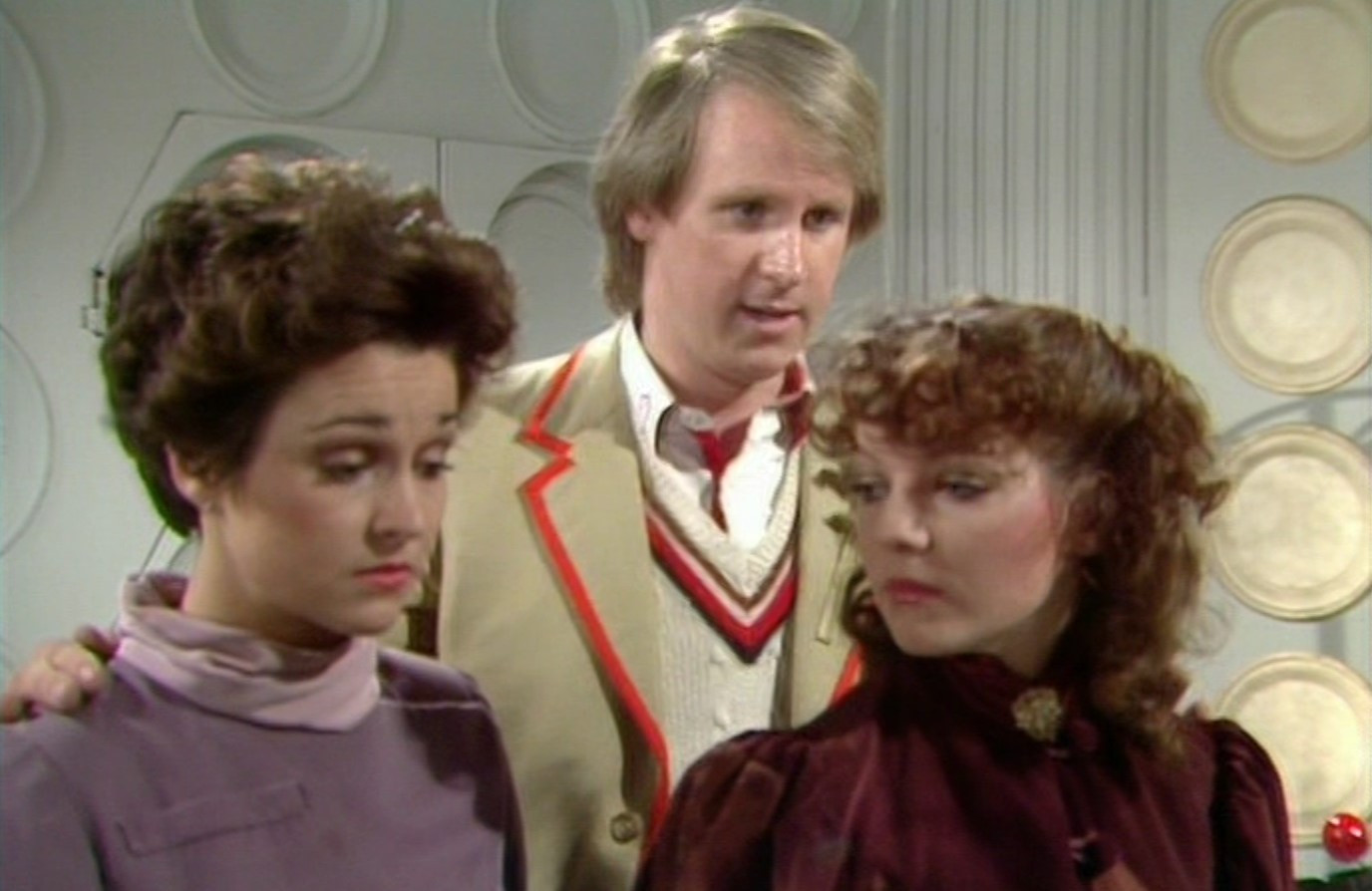 Fifth Doctor 21
Fifth Doctor 21
The episodes following Adric’s death explore grief and darker moral territories. The Doctor contemplates murdering Davros, and witnesses the Master’s agonizing death by fire, choosing not to intervene. These events inject a significant dose of moral ambiguity into the Doctor’s character, a stark contrast to his earlier, more lighthearted portrayal. This shift perhaps reflected the changing cultural landscape of the 1980s, with the rise of action heroes and grittier narratives.
 FIfth Doctor 15
FIfth Doctor 15
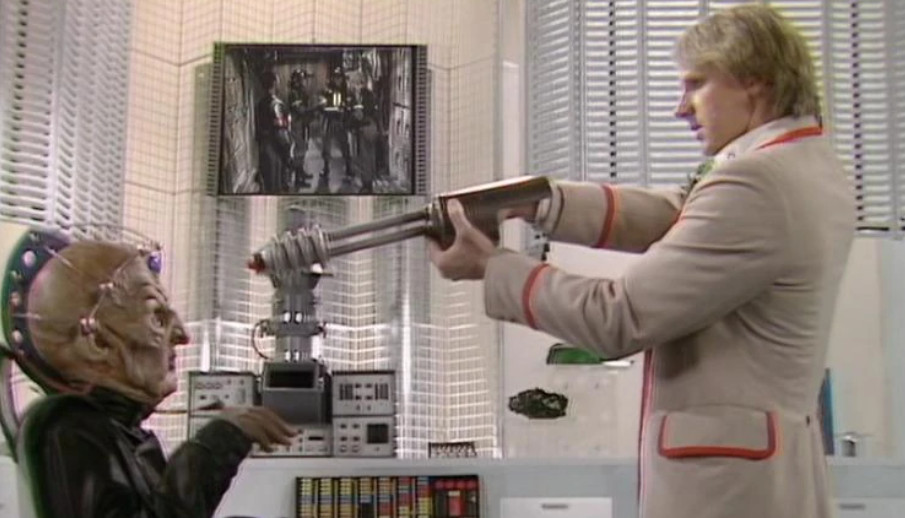 Fifth Doctor 23 (2)
Fifth Doctor 23 (2)
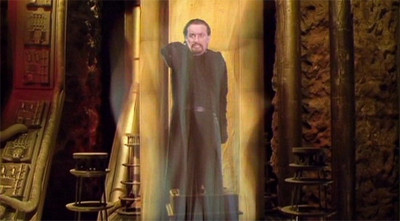 Fifth Doctor 24
Fifth Doctor 24
The departure of Nyssa and Tegan further marks the end of an era, with Peri Brown, an American companion, joining the Doctor, potentially signaling an attempt to broaden Doctor Who’s appeal.
Despite the darker undertones of the later episodes, the Fifth Doctor remains a warm, empathetic, and thoroughly endearing incarnation. His quirks – tossing his cricket ball, flipping a coin for decisions (and often ignoring the result), his genuine joy and paternal affection for his companions – all contribute to his unique charm. Even the cricket scene in “Black Orchid,” while confusing to those unfamiliar with the sport, adds to his endearing eccentricity.
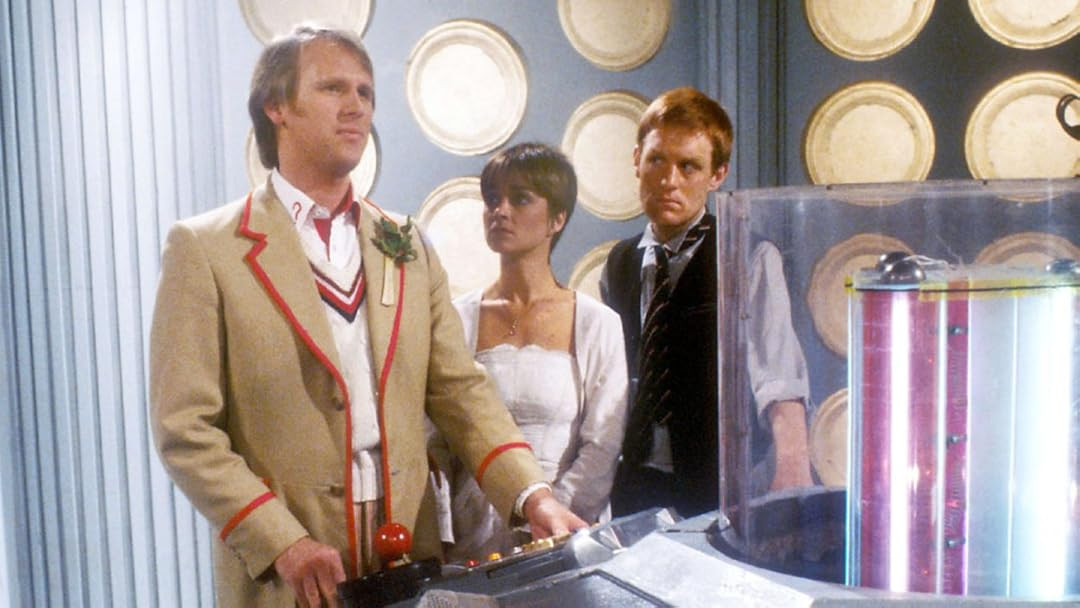 Fifth Doctor 28
Fifth Doctor 28
Final Thoughts on the Fifth Doctor: A Beloved Incarnation
My initial hesitation about embracing Peter Davison’s Fifth Doctor quickly dissipated, replaced by genuine appreciation and affection. He, along with Nyssa, Tegan, Adric, and Turlough, became one of my most cherished TARDIS teams. The Fifth Doctor’s era is a compelling blend of lighthearted charm and unexpected darkness, making it a significant and memorable chapter in the long history of Doctor Who. For anyone exploring classic Doctor Who, the Fifth Doctor’s era is a must-watch, offering a unique perspective on the Time Lord and his ever-evolving journey.
Explore More Doctor Who Regenerations:
- Impressions of the First Doctor
- Impressions of the Second Doctor
- Impressions of the Third Doctor
- Impressions of the Fourth Doctor
References
[1] Peter Grimwade, dir. “Earthshock: Part Three,” Doctor Who, season 19, episode 21, BBC, 1982.
[2] Peter Moffatt, dir. “The Visitation: Part Four,” Doctor Who, season 19, episode 16, BBC, 1982.
[3] Mary Ridge, dir. “Terminus: Part Four,” Doctor Who, season 20, episode 16, BBC, 1983.
[4] Peter Grimwade, dir. “Earthshock: Part One,” Doctor Who, season 19, episode 19, BBC, 1982.
[5] Ron Jones, dir. “Black Orchid: Part One,” Doctor Who, season 19, episode 17, BBC, 1982.
[6] Fiona Cumming, dir. “Castrovalva: Part Three,” Doctor Who, season 19, episode 3, BBC, 1982.
[7] Peter Moffatt, dir. “The Visitation: Part Three,” Doctor Who, season 19, episode 15, BBC, 1982.
[8] Ibid.
[9] Fiona Cumming, dir. “Castrovalva: Part Two,” Doctor Who, season 19, episode 2, BBC, 1982.
[10] Peter Moffatt, dir. “Mawdryn Undead: Part One” Doctor Who, season 20, episode 9, BBC, 1983.
[11] Peter Moffatt, dir. “Mawdryn Undead,” Doctor Who, season 20, serial 3, BBC, 1983.
[12] Jamie Donoughue, dir. “The Legend of Ruby Sunday,” season 1, episode 8, BBC and Disney+, 2024.
[13] Peter Grimwade, dir. “Kinda: Part One,’ Doctor Who, season 19, episode 9, BBC, 1982.
[14] Peter Grimwade, dir. “Kinda: Part Three,” Doctor Who, season 20, episode 11, BBC, 1982.
[15] Peter Grimwade, dir. “Kinda: Part Two,” Doctor Who, season 19, episode 10, BBC, 1982.
[16] Peter Grimwade, dir. “Kinda: Part Three,” Doctor Who, season 20, episode 11, BBC, 1982.
[17] Peter Grimwade, dir. “Kinda: Part Four,” Doctor Who, season 19, episode 12, BBC, 1982.
[18] Peter Grimwade, dir. “Earthshock,” Doctor Who, season 19, serial 6, BBC, 1982.
[19] Ron Jones, dir. “Arc of Infinity,” Doctor Who, season 20, serial 1, BBC, 1983.
[20] Fiona Cumming, dir. “Snakedance,” Doctor Who, season 20, serial 2, BBC, 1983.
[21] Fiona Cumming, dir. “Enlightenment,” Doctor Who, season 20, serial 5, BBC, 1983.
[22] Just, like, ALL THE TIME.
[23] Matthew Robinson, dir. “Resurrection of the Daleks,” Doctor Who, season 21, serial 4, BBC, 1984.
[24] Well, technically Katarina, who sacrificed herself to save the First Doctor and Steven in 1966’s “The Daleks’ Master Plan,” was but she was just with them for an episode and all her serials are lost.
[25] Peter Grimwade, dir. “Earthshock: Part Four” Doctor Who, season 19, episode 22, BBC, 1982.
[26] Ron Jones, dir. “Time-Flight,” Doctor Who, season 19, episode 23, BBC, 1982.
[27] Matthew Robinson, dir. “Resurrection of the Daleks: Part Two” Doctor Who, season 21, episode 12, BBC, 1984.
[28] Matthew Robinson, dir. “Resurrection of the Daleks: Part One” Doctor Who, season 21, episode 11, BBC, 1984.
[29] Matthew Robinson, dir. “Resurrection of the Daleks: Part Two” Doctor Who, season 21, episode 12, BBC, 1984.
[30] Fiona Cumming, dir. “Planet of Fire: Part Four,” Doctor Who, season 21, episode 16, BBC, 1984.
[31] Mary Ridge, dir. “Terminus: Part Four,” Doctor Who, season 20, episode 16, BBC, 1983
[32] Matthew Robinson, dir. “Resurrection of the Daleks: Part Two” Doctor Who, season 21, episode 12, BBC, 1984.
[33] Fiona Cumming, dir. “Planet of Fire: Part Four,” Doctor Who, season 21, episode 16, BBC, 1984.
[34] Ron Jones, dir. “Black Orchid: Part One,” Doctor Who, season 19, episode 17, BBC, 1982.

